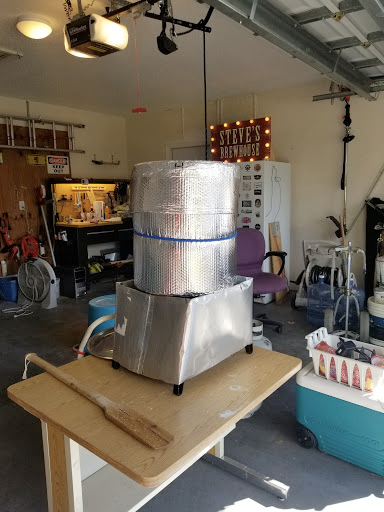I keep mine simple, sit my kettle on folded up flannel sheets, wrap it in the other sheet, and a wool blanket on the lid. And then try to tie rope around it all to keep it nice and snug. Lifting the kettle is a pain, but if you've got someone to help, it's a lot easier (assuming you're doing a 5 gallon batch) Though, I will lose 3-4F (like, 1-2C?) in the summer, not looking forward to see what will happen in the winter...
I lost more heat than normal my last brew, so I lifted the 10 gallon kettle (full of water and grain, FULL), back up on the burner, lifted the bag out enough so I "knew" it wasn't in contact with the bottom, and fired her up again. Little did I know that one of the nylon loop at the top of the bag got hot and melted (no more loop) even though it wasn't anywhere close to the flame (I blame heat transfer here...). I would opt to not do that if you have the chance.
@shetc , is that sheet metal wrapped around a propane burner? I imagine so since I see a tank in the background, but I could see it being a fancy induction burner. I've saw people say "use thick tinfoil" to wrap around the base, but the sheet metal is definitely much better.











![Craft A Brew - Safale S-04 Dry Yeast - Fermentis - English Ale Dry Yeast - For English and American Ales and Hard Apple Ciders - Ingredients for Home Brewing - Beer Making Supplies - [1 Pack]](https://m.media-amazon.com/images/I/41fVGNh6JfL._SL500_.jpg)















































